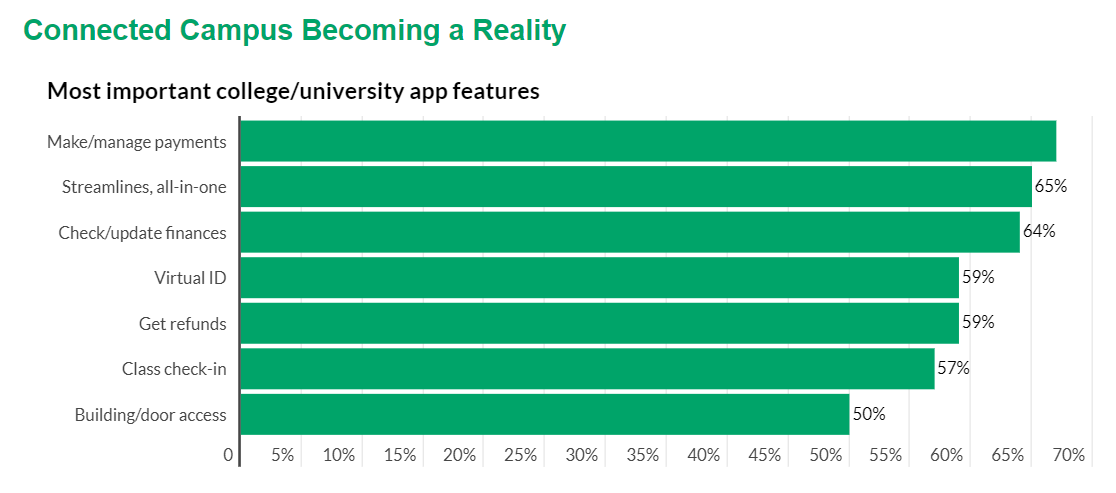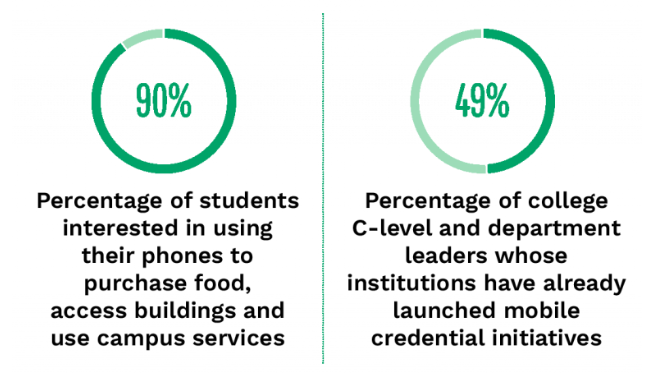Universities Tap Digital Tools to Overcome ‘Connected Campus’ Security Concerns

Automation is predicted to become the centerpiece of the campus of the future, transforming various aspects of university life.
As detailed in the “The Automated Campus: Enabling the Future of Higher Education,” a collaboration between PYMNTS Intelligence and American Express, higher education has evolved significantly from its traditional image, with universities having had to embrace digital solutions to stay in sync with evolving student behaviors.
Additionally, the pandemic necessitated a major transition to online learning, while catalyzing the widespread integration of online payment platforms and cashless transaction methods across colleges and universities.

However, with this transformation comes the need to strengthen security measures as the growing dual risks of physical violence and cyberattacks create significant concerns for higher education institutions. In fact, the study found that nearly two-thirds of higher-ed decision-makers consider threats to both physical and network security as top priorities for their institutions.
In August, for example, the University of Michigan, one of the largest educational institutions in the United States, was forced to shut down all of its campus systems and services to deal with a cybersecurity incident, resulting in a major disruption of online services on the evening prior to classes starting.
In June, another U.S. institution, the University of California, Los Angeles (UCLA), confirmed it was hit by wide-ranging cyberattack and was working with external cybersecurity experts to investigate the extent of the matter.
Even the New York Department of Education has not been spared. That same month, a cyberattack reportedly exposed sensitive data on around 45,000 New York City public school students and staff, including Social Security numbers, birth dates and student evaluations.
Security a Top Aim of ‘Connected Campus’
To stem the tide, universities and institutions of higher education are increasingly investing in automation and advanced mobile systems to enhance security and protect their students and networks.
One of the primary strategies being adopted is the migration of network infrastructure to higher-security providers, which offer university networks better protection against cyberthreats.

Access management is another aspect of campus security that is being upgraded through automation. In fact, multiple universities are planning to update their access management systems to monitor the use of student IDs campuswide in an effort to better control access to campus facilities and identify any unauthorized individuals.
Furthermore, technologies such as door-prop alerts and remote door-locking controls are seeing increased adoption on campuses. These automated systems can detect when doors are propped open or left unlocked, immediately alerting security personnel to take necessary action.
Digital tools and apps are also being used to ensure students’ personal safety on campus by monitoring their movements and alerting them of potential physical danger. These technologies allow for real-time tracking, ensuring that students can be quickly located and assisted in emergency situations.
One of the universities embracing this trend is the University of Arkansas at Little Rock (UA Little Rock). The institution recently upgraded its Trojan Campus Safety app, enabling students to directly connect with campus police via a live chat feature and request a “virtual escort” so they can be accompanied in real-time as they move from one location to another.
The app also provides students access the university’s emergency plans and campus maps, while offering them the opportunity to send anonymous tips to report suspicious activity or general safety concerns.
“Our top priority is the safety and well-being of our campus family. I invite everyone on campus to participate in creating a safer environment by downloading the app,” said Regina Carter, associate vice chancellor of public safety and chief of police for UA Little Rock.
